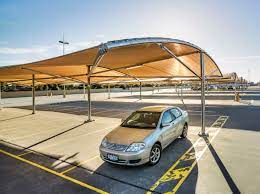Navigating Commercial Districts: The Challenge of Parking Congestion
Navigating through commercial districts can be a test of patience, especially during peak hours when parking congestion peaks. The bustling streets, filled with shoppers, workers, and tourists alike, contribute to the demand for parking spaces. Understanding the peak hours for parking congestion in these areas is crucial for optimizing travel plans and avoiding unnecessary delays. Check out Shelter Tent LLC car shade for the best quality.
Commercial districts typically experience heightened parking congestion during specific times of the day. Morning rush hours, typically between 8:00 AM and 10:00 AM, witness a surge in vehicles as employees head to work and deliveries are made to businesses. Lunchtime, from 12:00 PM to 2:00 PM, sees another spike as individuals venture out for meals or run errands. Finally, the evening rush hour, spanning from 4:00 PM to 7:00 PM, marks the end of the workday and triggers another wave of traffic as people head home or engage in post-work activities.

Amidst this congestion, accessibility for individuals with disabilities becomes a paramount concern. While commercial parking lots are essential components of urban infrastructure, their accessibility features must cater to the diverse needs of all visitors. The availability of designated accessible parking spaces equipped with features such as wider spaces, ramps, and signage for disabled individuals is critical. However, the mere provision of these spaces is not sufficient; they must also be strategically located near entrances to ensure ease of access.
Despite efforts to enhance accessibility, challenges persist. In some cases, commercial parking lots may lack adequate signage, making it difficult for individuals with disabilities to locate designated spaces. Furthermore, the presence of obstacles such as potholes or poorly maintained pathways can pose safety hazards for those with mobility impairments.
Addressing these challenges requires a multifaceted approach. Municipalities and businesses must collaborate to improve signage, maintain infrastructure, and implement innovative solutions such as mobile apps for real-time parking availability and reservation systems for accessible spaces. By prioritizing accessibility and understanding the patterns of parking congestion, commercial districts can become more inclusive and efficient environments for all visitors.
…
